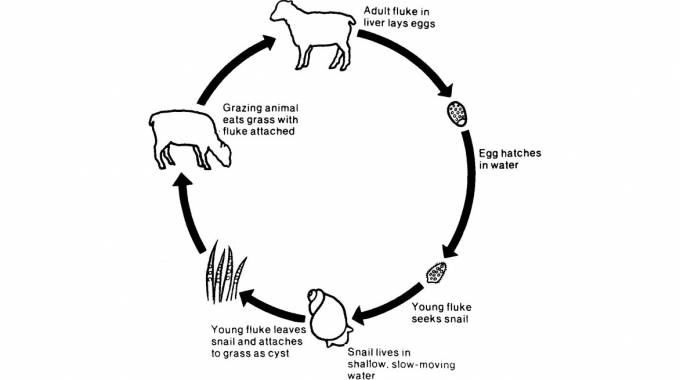
The Sunday Mail

Farmer’s Diary
Sheuneni Kurasha
Welcome dear reader to our column where we explore all things farming.
Given the array of diseases that afflicts goats, I think it is critical that like last week, I also devote a bit of time on the most common goat afflictions, specifically pneumonia, bloat, diarrhoea and foot rot, and their remedies.
Other common diseases that farmers need to take note off are orf, liver fluke and enzootic abortion. A point to further note is that these diseases also affect sheep and other domestic animals.
Orf
Orf, also called scabby mouth, is a highly contagious, viral disease that affects goats, sheep and occasionally humans. The disease causes wart-like lesion on the skin of goats and sheep and is caused by a poxvirus called Paravaccinia.
The orf virus mainly affects the mouth, feet and genitals but the mouth and feet are most commonly affected.
Occasionally, it also affects eyes, legs, udder, teats and oesophagus. Affected does and ewes may not allow kids and lambs to suckle while affected kids and lamps also struggle to suckle, which can result in them losing weight and or even dying. Secondary bacterial infection of the lesions may occur and this may result in complications such as mastitis and septicaemia.
Young kids and lambs are more susceptible to orf and tend to exhibit more serious clinical signs than adult animals.
Orf in goats and sheep is normally self-limiting and clears without treatment within three to four weeks.
Animals that recover from the disease develop a lifelong immunity to the disease. Antibiotics are not necessary unless secondary bacterial infection occurs. There is also a vaccine available and it provides good protection from the disease.
Liver fluke
Liver fluke, also called Fasciola Hepatica, is a parasite often associated with goats that graze in wet and poorly drained areas. While roundworms are often specific to one type of animal, the liver fluke, apart from infecting goats, can infect other species including cattle, sheep, horses, humans and wild animals.
Liver fluke need warm and wet weather to complete parts of their life cycle; without wet habitat they are not be able to reproduce. Fluke snails also do not like acidic ground.
Liver fluke is known to kill livestock in large numbers and sometimes without warning. In some countries up to 20 percent of all slaughtered carcasses have their livers condemned because of fluke damage.
This is the case because fluke snails can rapidly produce around 100 000 offspring in 3 to 4 months and each of these snails can host hundreds of fluke.
The best way to treat fluke is by combining prevention and treatment methods. To achieve this, farmers must understand the life-style of the liver fluke. The liver fluke has a complex life-cycle, going through various stages before entering a ruminant and starts to cause problems.
The life cycle of a fluke is around 17 weeks and it starts with contaminated livestock faeces that contain the parasites egg.
The fluke eggs take between nine and ten days to hatch and turn into a miracidia. The miracidia enters its intermediate host, the lymnaeid snail.
The miracidia have around three hours to infect a lymnaeid snail before dying. At this stage the miracidia cannot survive without water and will also struggle to develop if the temperature is below 10 degrees. This is why the fluke is rare during the coldest or driest parts of the year.
Once inside the lymnaeid snail, the miracidia will reproduce and go through several stages of development.
After six to seven weeks, the miracidia will emerge from the snails and proceed to encyst vegetation and pasture, ready to enter its host.
The host will swallow the cyst by eating contaminated grass or pasture.
Once inside the host’s digestive system, the fluke will migrate to the liver where they first start to cause problems. The fluke will grow inside the host’s liver and tunnel through it, causing catastrophic liver damage. The liver tunnels will fill with blood clots and pus thereby causing it to disintegrate (nicknamed liver rot).
Eventually, the fluke will mature, and move to the bile duct and sometimes the gall bladder where they will start laying eggs. The eggs will be deposited back to the outside world in their host’s faeces and the life cycle will repeat itself.
Infected goats may have abdominal pain or anemia, progressive weight loss and appear weak with the lining of the eye becoming pale and swollen (flukey eye)
There are various flukicidal drugs available. A treatment plan should be based on the time of the year (whether wet or dry and warm or cold) and severity of the fluke infestation. In cases of severe infection, it is recommended to consult the veterinary.
Enzootic Abortion
Enzootic abortion is a contagious disease of goats, sheep and cattle. Cause by the organism Chlamydia abortus, enzootic abortion is one of the most common causes of abortion in goats. The organism can occur in the intestinal tract and faeces of healthy animals. Infection into a herd is usually through purchasing of infected animals. Thereafter it spreads from animal to animal, usually during kidding.
Animals also contract the disease through mouth when they eat feed or pasture that is infected by the afterbirth, amniotic fluid or the aborted foetus of an infested doe.
The kids of an infected doe are infected at birth or shortly afterwards by swallowing infected material and the infection remains latent in the kid until she aborts during her first gestation.
During an outbreak, aborting does should be isolated and tetracyclines should be administered orally or parentally.
Paswera badza hapanyepi!
Till next week.
Sheuneni Kurasha is the Managing Director of Chivara Farm, which specialises in stud breeding in boran cattle, boer goats and damara sheep, as well as dairy farming. For feedback, kindly get in touch on email: [email protected] or WhatsApp: +263 772 874 523.



